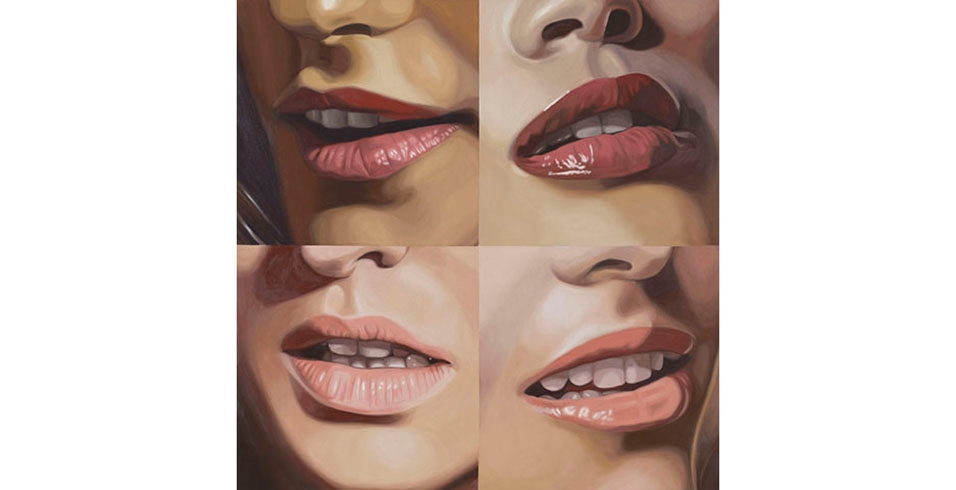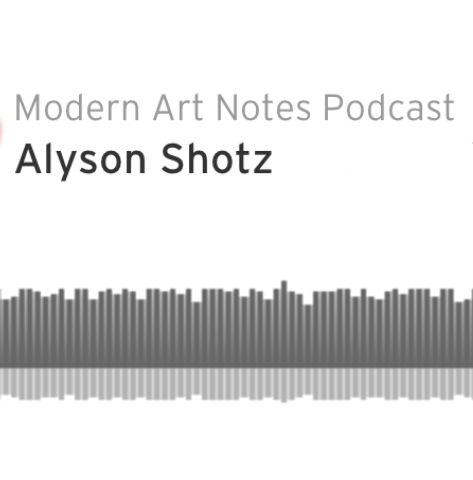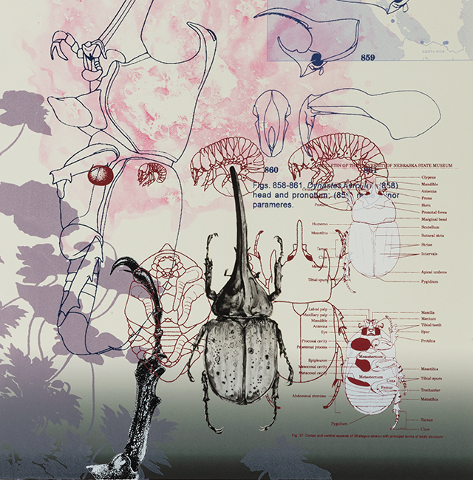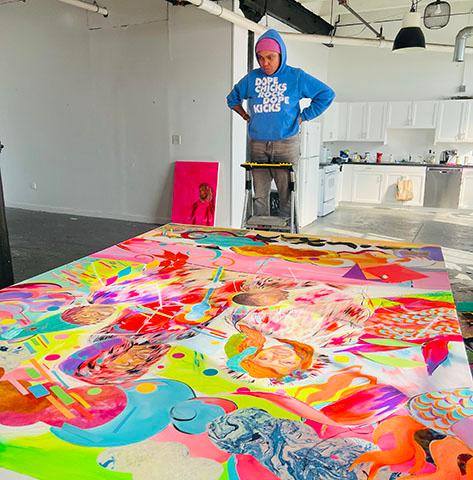Julia Jacquette. The Mouths of Four Gorgons, 2014. Oil on linen, 48 x 48 inches.

The imagery of Julia Jacquette’s hyperrealistic paintings is recognizable yet unplaceable. Often drawn from commonplace magazine ads and brand catalogs, the artist zooms in on a specific detail for her source material before magnifying it to near abstraction: the edge of an ear, a sparkling cascade of necklaces, a close-up of floating glitter. It doesn’t matter what’s being promoted in these ads—at this macro scale, all that’s left is an aura of opulence so familiar that you realize you’ve already been sold.
“Unrequited and Acts of play,” a survey of Jacquette’s work now on view at the Wellin Museum of Art at Hamilton College in Clinton, New York, dives head first into the artist’s propensity for upsized iconography. They exhibition—which will remain on view through July 2 before an abbreviated version of it travels to the Visual Arts Center of New Jersey in September—features two site-specific commissioned murals, each 12 by 16 feet, which greet visitors as they enter the galleries. With the help of six Hamilton College students, Jacquette rendered the pristine, sparkling waves of a pool scene in a J. Crew catalog and a Secrets resort ad, respectively, at near pool-size dimensions. The result is an immersive introduction to the mid-career artist’s oeuvre.
“Over the past 50 years, advertising has largely been the medium by which we learn beauty,” says Jacquette. “Art became kind of skeptical of beauty when it turned toward the abstract and conceptual.” In her obtuse representations of expertly evocative ads, the artist says that she is confessing to her own seduction. “In the critique I provide, I’m admitting my own defeat. I’m a sucker for these images. I find them beautiful”
The exhibition also features a selection of Jacquette’s gouaches, which often serve as studies for her larger works. “For me, demystifying how an artist works is really important,” says Tracy L. Adler, director of the Wellin Museum and curator of the show. “Julia has never exhibited her gouaches before, but I think showing these works illuminates her practice in a new way.” Also on view are several of the artist’s food paintings, which depict in grid form (a la a grocery store circular) idealized renderings of desserts, cuts of meat, and salads. The images are overlaid with text that expresses the artist’s inner fears and doubts about her work as if her vulnerability is the price of the everyday comestibles.
Jacquette’s work is undeniably indebted to Pop art. It’s easy to draw formal allusions between her paintings and those of James Rosenquist or Andy Warhol. Yet the self-doubt and diffident humor she deploys adds another—perhaps distinctly feminine—layer of meaning to her work. “There is a mythical, perfect, attainable existence that the media puts forth, often specifically targeted at women,” says Jacquette. “ I’m fascinated by my own relationship to it.”
“She was one of just a few women doing this kind of work for a long time,” Adler says. “She pushes the overwhelmingly masculine vibe of Pop art through a feminist lens.”
A Second part of the exhibition showcases Jacquette’s childhood upbringing in graphic memoir form. A series of 60 gouaches on paper, “Playground of My Mind,” explores the adventure playgrounds of New York City in the 1960s and ‘70s on which the artist grew up playing. Like her painting, the memoir—which was published by Prestel in conjunction with the exhibitions opening—reflects upon the conflicted emotions and idealized aspects of the past; and how both our physical and media environments can indelibly alter our perception of the world. -MC







